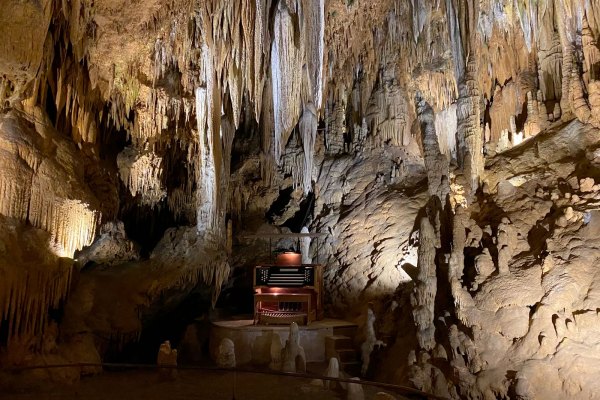Hit something with a hammer, and it makes a sound. If you’re lucky, it might even make a pleasant sound, which is the idea behind the Great Stalacpipe Organ in Luray Caverns, Virginia. The organ was created in 1954 by [Leland W. Sprinkle], who noticed that some stalactites (the ones that come down from the ceiling of the cave) would make a nice, pure tone when hit.
So, he did what any self-respecting hacker would do: he picked and carved 37 to form a scale and connected them to an electronic keyboard. The resonating stalactites are spread around a 3.5 acre (14,000 square meters) cave, but because it is in a cave, the sound can be heard anywhere from within the cave system, which covers about 64 acres (260,000 square meters). That makes it the largest musical instrument in the world.

We’ll save the pedants the trouble and point out that the name is technically an error — this is not a pipe organ, which relies on air driven into resonant chambers. Instead, it is a lithophone, a percussion instrument that uses rock as the resonator. You can see one of the solenoids that hits the rock to make the sound below.
This is also the sort of environment that gives engineers nightmares: a constant drip-drip-drip of water filled with minerals that love to get left behind when the water evaporates. Fortunately, the Stalacpipe Organ seems to be in good hands: according to an NPR news story about it, the instrument is maintained by lead engineer for the caverns [Larry Moyer] and his two apprentices, [Stephanie Beahm] and [Ben Caton], who are learning the details of maintaining a complex device like this.
Continue reading “Virginia Cave Is The Largest Musical Instrument In The World”










